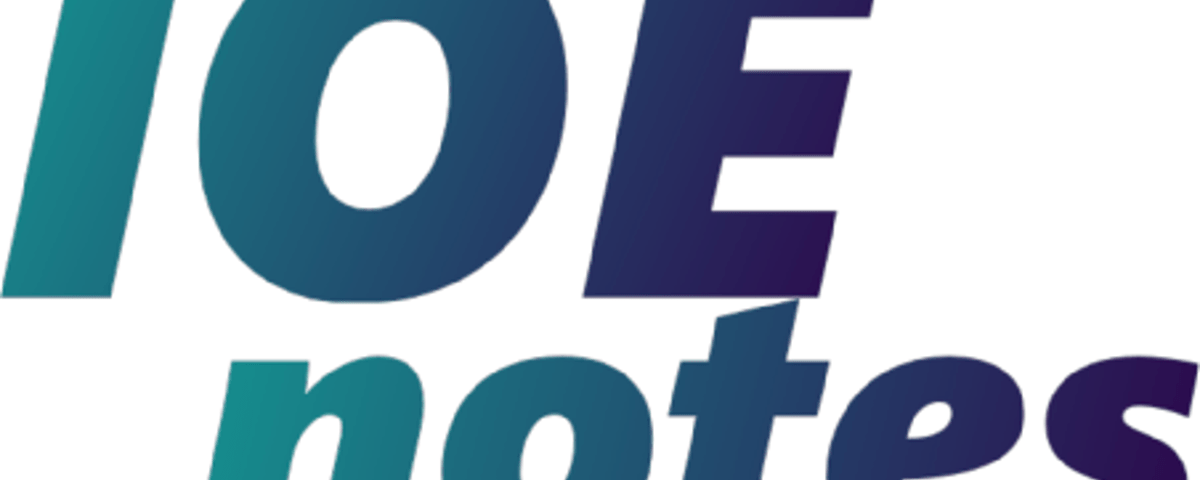|
Instrumentation II |
|
|
EX |
|
|
Lecture: 3 |
Year: III |
|
Tutorial: 1 |
Part: I |
|
Practical: 1.5 |
Course Objectives:
Continuation of Instrumentation I with emphasis on advance system design and case studies.
To introduce and apply the knowledge of microprocessor, A/D, D/A converter to design Instrumentation system.
To provide the concept on interfacing with microprocessor based system and circuit design techniques.
|
1. |
Microprocessor Based Instrumentation System |
(4 Hours) |
1.1Basic Features of Microprocessor Based System
1.2Open Loop and Closed Loop Microprocessor Based System
1.3Benefits of Microprocessor Based System
1.4Microcomputer on Instrumentation Design
1.5Interfacing With Microprocessor
1.5.1PC Interfacing Techniques
1.5.2Review of Address Decoding
1.5.3Memory Interfacing
1.5.4Programmed I/O, Interrupt Driven I/O and Direct Memory Access (DMA)
|
2. |
Parallel Interfacing With Microprocessor Based System |
(4 Hours) |
2.1Methods of Parallel Data Transfer: Simple Input and Output, Strobe I/O, Single Handshake I/O, & Double Handshake I/O
2.28255 as General Purpose Programmable I/O Device and its interfacing examples
2.3Parallel Interfacing with ISA and PCI bus
|
3. |
Serial Interfacing With Microprocessor Based System |
(6 Hours) |
3.1Advantages of Serial Data Transfer Over Parallel
3.2Synchronous and Asynchronous Data Transfer
3.3Errors in Serial Data Transfer
3.4Simplex, Half Duplex and Full Duplex Data Communication
3.5Parity and Baud Rates
3.6Introduction Serial Standards RS232, RS423, RS422
3.7Universal Serial Bus
3.7.1The Standards:- USB 1.1 and USB 2.0
3.7.2Signals, Throughput & Protocol
3.7.3Devices, Hosts and On-The-Go
3.7.4Interface Chips: USB Device and USB Host
|
4. |
Interfacing A/D and D/A Converters |
(4 Hours) |
4.1Introduction
4.2General Terms Involved in A/D and D/A Converters
4.3Examples of A/D and D/A Interfacing
4.4Selection of A/D and D/A Converters Based on Design Requirements
|
5. |
Data Acquisition and Transmission |
(5 Hours) |
5.1Analog and Digital Transmission
5.2Transmission Schemes
5.2.1Fiber Optics
5.2.2Satellite
5.2.3Bluetooth Devices
5.3Data Acquisition System
5.3.1Data Loggers
5.3.2Data Acquisition and Storage
|
6. |
Grounding and Shielding |
(3 Hours) |
6.1Outline for Grounding and Shielding
6.2Noise, Noise (Energy) Coupling Mechanism and Prevention
6.3Single Point Grounding and Ground Loop
6.4Filtering and Smoothing
6.5Decoupling Capacitors and Ferrite Beads
6.6Line Filters, Isolators and Transient Suppressors
6.7Different kinds of Shielding Mechanism
6.8Protecting Against Electrostatics Discharge
6.9General Rules for design
|
7. |
Circuit Design |
(3 Hours) |
7.1Converting Requirement into Design
7.2Reliability and Fault Tolerance
7.3High Speed Design
7.3.1Bandwidth, Decoupling, Ground Bounce, Crosstalk, Impedance Matching, and Timing
7.4Low Power Design
7.5Reset and Power Failure Detection and Interface Unit
|
8. |
Circuit Layout |
(3 Hours) |
8.1Circuits Boards and PCBs
8.2Component Placement
8.3Routing Signal Tracks
8.3.1Trace Density, Common Impedance, Distribution of signals and Return, Transmission Line Concerns, Trace Impedance and Matching, and Avoiding Crosstalk
8.4Ground, Returns and Shields
8.5Cables and Connectors
8.6Testing and Maintenance
|
9. |
Software For Instrumentation and Control Applications |
(4 Hours) |
9.1Types of software, Selection And Purchase
9.2Software Models and Their Limitations
9.3Software Reliability
9.4Fault Tolerance
9.5Software Bugs and Testing
9.6Good Programming Practice
9.7User Interface
9.8Embedded and Real Time Software
10. Case Study (9 Hours) Examples chosen from local industrial situations with particular attention paid to the basic measurement requirements, accuracy, and specific hardware employed environmental conditions under which the instruments must operate, signal processing and transmission, output devices:
a)Instrumentation for a power station including all electrical andnon-electrical parameters.
b)Instrumentation for a wire and cable manufacturing and bottling plant
c)Instrumentation for a beverage manufacturing and bottling plant
d)Instrumentation for a complete textile plant; for example, a cotton foil from raw cotton through to finished dyed fabric.
e)Instrumentation for a process; for example, an oil seed processing plant from raw seeds through to packaged edible oil product.
f)Instruments required for a biomedical application such as a medical clinic or hospital.
g)Other industries can be selected with the consent of the subject teacher.
Practical:
The laboratory exercises deal interfacing techniques using microprocessors, microcontrollers. There will be about six lab sessions which should cover at following:
1.Simple and Handshake data transfer using PPI
2.Basic I/O device interfacing like keyboard, seven segments, motors etc.
3.Analog to Digital interfacing
4.Digital to Analog interfacing
5.Design exercise (small group project)
References:
D. V. Hall, “Microprocessor and Interfacing, Programming and Hardware”
K. R. Fowler, “Electronic Instrument Design: Architecting for the Life Cycle”
Ramesh S. Gaonkar, “Microprocessor Architecture, Programming and Application with 8085”
A. K. Ray & K.M. Bhurchandi, “Advanced Microprocessors and Peripheral”
E.O. Duebelin, “Measurement System Application and Design”
John Hyde, “USB Design by Example”, Intel Press
PCI bus, USB, 8255, Bluetooth datasheets
D.M. Consodine
S. Walf and R. F. Smith
S.E. Derenzo
Evaluation Scheme:
The question will cover all the chapters of the syllabus. The evaluation scheme will be as indicated in the table below:
|
Chapters |
Hours |
Marks distribution |
|
1 |
4 |
8 |
|
2 |
4 |
8 |
|
3 |
6 |
10 |
|
4 |
4 |
8 |
|
5 |
5 |
8 |
|
6 |
3 |
6 |
|
7 |
3 |
6 |
|
8 |
3 |
6 |
|
9 |
4 |
8 |
|
10 |
9 |
12 |
|
Total |
45 |
80 |
*There may be minor variation in marks distribution.



1 Comment
[…] The complete syllabus of the second part of Instrumentation system for IOE affiliated colleges can be accessed from IOE Syllabus – Instrumentation II page. […]